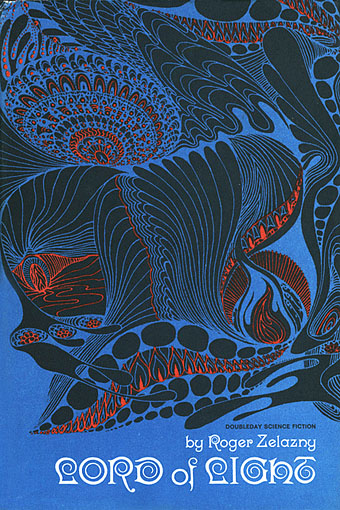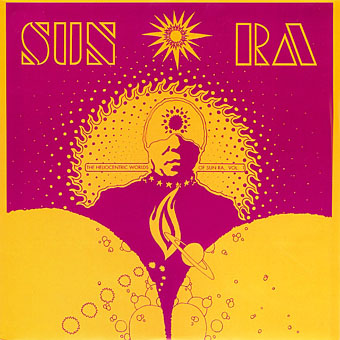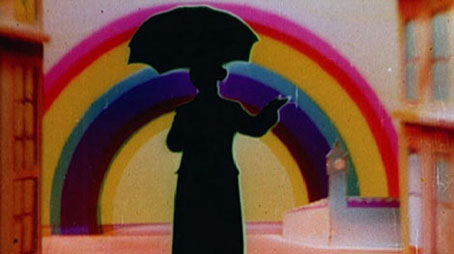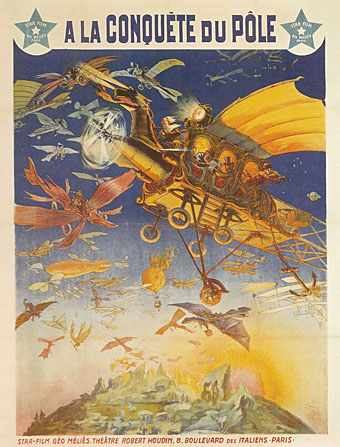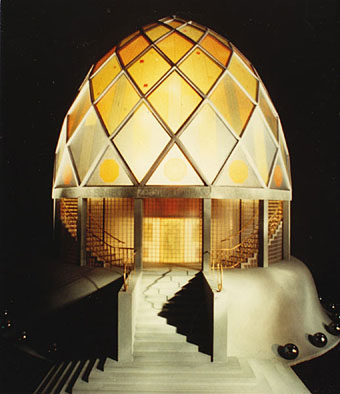
Some speculative architecture that for once isn’t from Paris in 1900. Bruno Taut (1880–1938) gets labelled an Expressionist architect although it’s always a hazardous business connecting people in other disciplines to whatever art movement may be around at the time. The Glass Pavilion was a showcase structure commissioned by the German glass industry for the 1914 Werkbund exhibition in Cologne. The colour photo is a model from this V&A page where we learn that:
Bruno Taut’s structure demonstrated the various ways glass could be used in a building, but also indicated how the material might be used to orchestrate human emotions and assist in the construction of a spiritual utopia. Taut’s interest in this aspect of glass (explored more intensively during the First World War and later in his book Alpine Architecture and in the Glass Chain letters) had been stimulated by the writer Paul Scheerbart whom he had met in 1912 and who argued for an earthly paradise based on a new architecture of glass and colour. Subsequently, Scheerbart wrote Glasarchitektur (Glass Architecture) in 1914, which he dedicated to Taut, while Taut produced his Glass Pavilion and inscribed aphorisms from Scheerbart on the lintels of the 14 side walls. […] The glazed walls were topped by a dome of reinforced concrete ribs and a double skin of glass: reflecting glass on the outside and coloured prisms inside. In the interior, the colour effects produced by sunlight were enhanced by the reflections of the pool and water cascade on the lower level, visible through a circular opening in the floor. Two flights of glass steps enclosed with glass walls produced the sensation of descending to the lower level ‘as if through sparkling water’. The cascade was made of yellow glass, while the pool was of its complementary colour, violet. A mechanical kaleidoscope overhead projected images, an early version of a light show, intensifying the overall impression on the visitor.
All of which makes one wish there were more colour photos available. There’s another photo of the model here which shows a very different arrangement of light and colour.
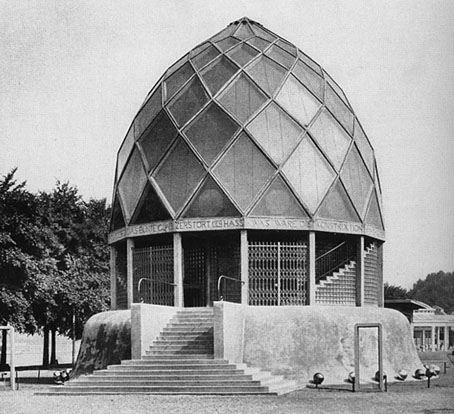
Le Corbusier apparently disliked Taut’s obsession with vivid colours, accusing him of being colour blind. There’s more about Taut’s philosophy of colour here. Taut wasn’t the only architect at the time interested in glass, his contemporary Hermann Finsterlin designed a “dream in glass” in 1920 that still looks radical today, as do many of Finsterlin’s other designs, all of them a good reminder that biomorphic architecture isn’t exactly new, it’s just become easier to build.
See also: Lebbeus Woods on Taut’s plan to refashion the Alps into a range of crystalline buildings.
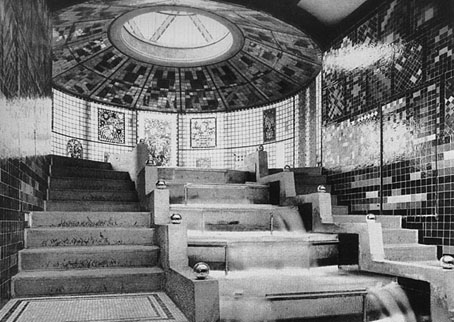
The cascade.
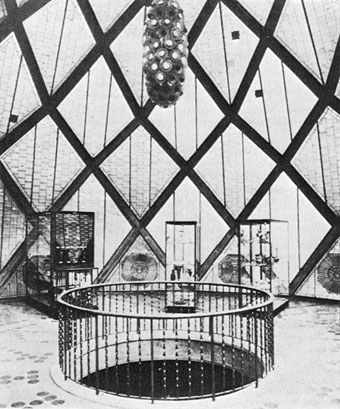
The dome interior.


